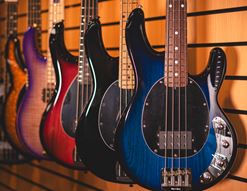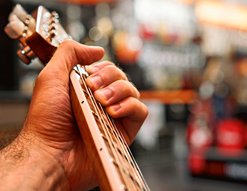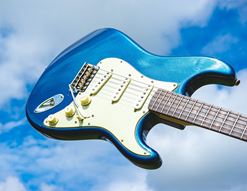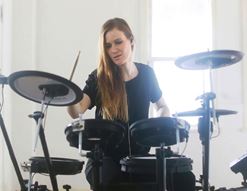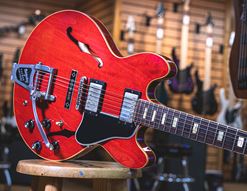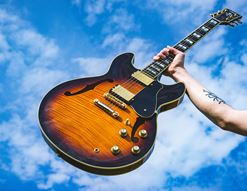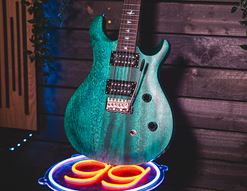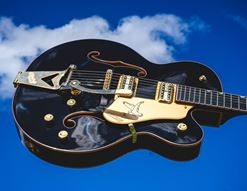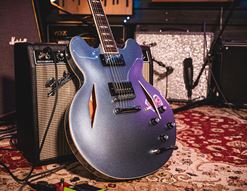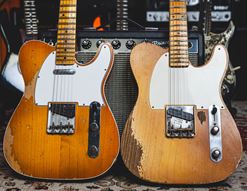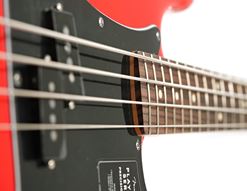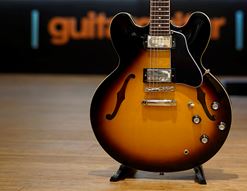Buying guitar pedals is loads of fun. Pedals are exciting and do cool things to your sound. Power supplies, on the other hand, don’t quite hold the same fascination, do they? They are purely functional devices, but without them, we can’t have any fun, can we?

With all of that in mind, today’s blog is all about helping you to choose the correct power supply for your needs.
I’ll look at the main types of power supply, explain some of the terms, and hopefully guide you towards what you need. Let me take the mystery out of the subject for you!
Do I Need a Power Supply for my Pedal?
If you are using an effects pedal of any description, then it needs to get power from somewhere in order to function. Back in the day, pedals used 9v PP3 batteries and whilst that’s still an option for most pedals, power supplies have become the most reliable and practical method for bringing your pedals to life.
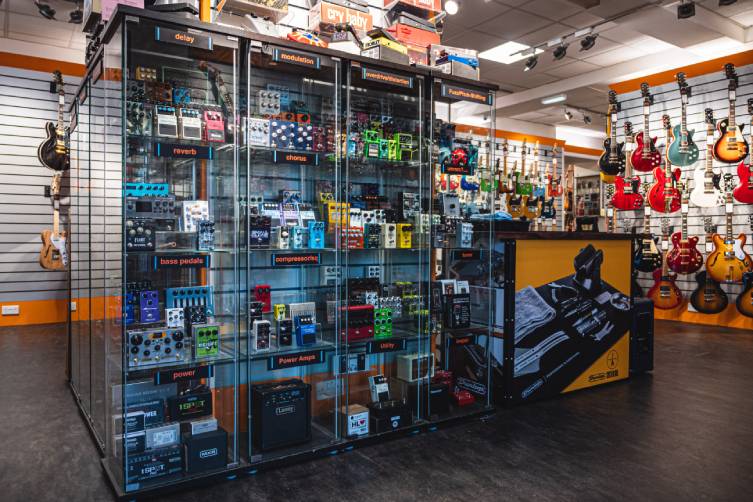
Why do you need a power supply? Well, unless you want to rely on batteries forever and ever, it seems both sensible and more economical to invest in a power supply. Batteries have a finite life, and so you’ll need to carry spares in the event that the ones inside the pedal run down. Battery life begins draining away as soon as a cable is plugged into a pedal’s input, so if you have a bunch of pedals, you’d need to unplug every cable when you’re done playing or the batteries will run dry.
A power supply means you never need to consider that, nor will you have to make that horrendous mad dash down a rainy, foreign city street half an hour before your set, looking for a place to buy batteries and hoping they’ll work with your pedals!
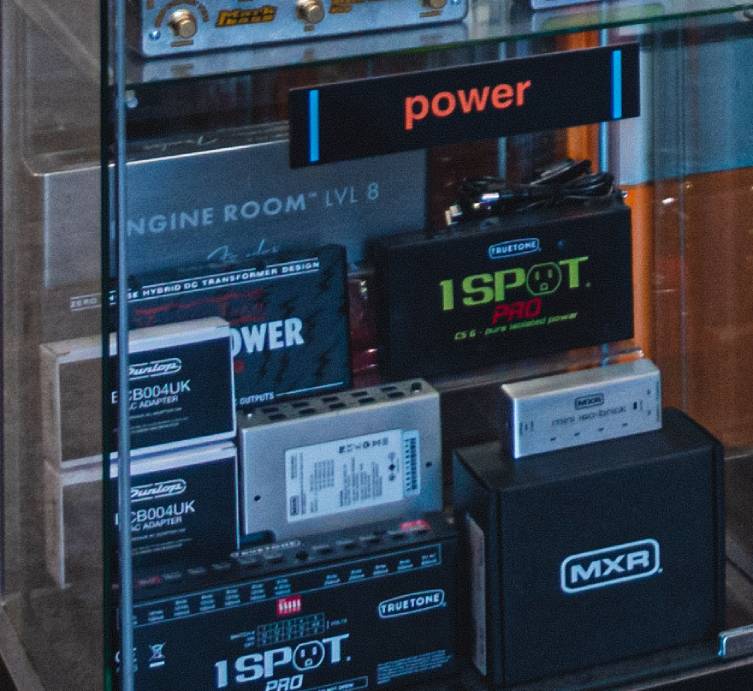
What is a Power Supply
A power supply is a device that plugs into the mains outlet and then brings that electricity to your pedals, bringing them to life. Power supplies come in a few different types and styles, and I’ll go a little deeper with that in a second. Simply put, power supplies give your pedals the correct amount of the correct type of electricity to keep them running properly at all times. They replace any requirement for batteries.
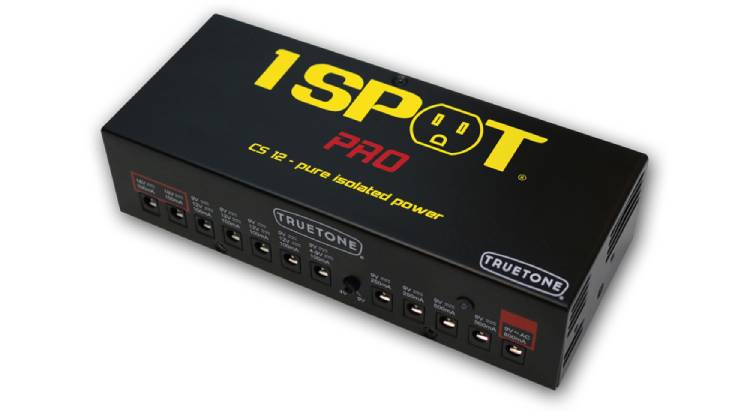
Voltage, Current & Polarity
With the subject of power supplies, you’ll come up against some specific terms that are worth knowing about. I won’t go too deep into these subjects, but you’ll gain an understanding of how these terms relate to pedals.
Voltage: all pedals need voltage, which is a charged current of electricity. Voltage is the ‘push’ that sends the electricity towards the device you want to power. A higher voltage means a bigger push, basically. The great majority of pedals require 9 volts (9v) to operate, though you’ll also find certain pedals want to have 12v or 18v. Not all power supplies can offer multiple voltages, so do look out for that.
Current: the electrical current is the flow of electricity itself (the charged particles), which the voltage pushes along inside the power supply cable towards your pedal or whatever else. Conductive material (the metal inside any cable) is the means by which an electrical current travels. Current is measured in amperes (A), or in terms we’ll need, milliAmps (mA) which is a thousandth of an Ampere. Pedals can require as little as 20mA or as much as 1000mA, which is a full Ampere. Giving a pedal less than it needs will mean it won’t work, basically.
Polarity: Polarity can be tricky to get your head around, but in layman’s terms, polarity is the direction that the current is travelling. For pedals, we talk about ‘centre negative’ and ‘centre positive’ to describe how the transistor part of the circuit is handling the current from the power supply. Centre negative is overwhelmingly the choice for pedals today, and you’ll see this expressed as a symbol on your pedal that looks like this:

It’s crucially important to use the correct polarity with your pedals or you could damage the interior components and potentially ruin the pedal. If most of your pedals are centre negative but one is centre positive, make sure you account for that: consider a separate supply for this pedal.
Types of Power Supply
Generally speaking, there are three types of power supply: single pedal supplies, daisy chains and regulated power supplies. Let me quickly explain each:
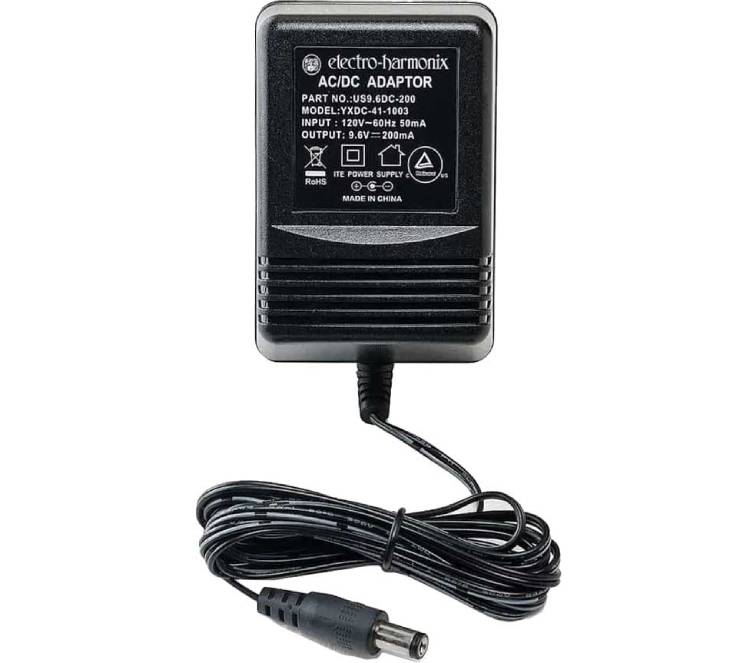
Single Pedal Power Supply
This one is relatively self explanatory: it’s a dedicated supply for one pedal. Typically, they take the form of a ‘wall wart’ (the adaptor is a big box with the mains plug section built into it) or something that looks a little more like this one:
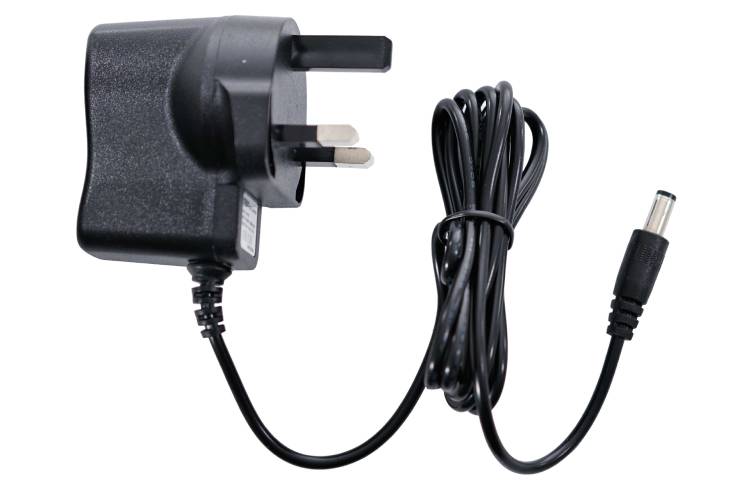
These can be bought for general 9v pedals, but it’s almost always simpler and smarter to buy a daisy chain or regulated supply instead, since they will power more pedals. Companies such as Ordo, Electro-Harmonix, BOSS and many other make these supplies.
Some pedals require special power supplies, and they are often included in the box when you buy them.
Daisy Chain Power Supply
A daisy chain power supply is superficially similar to the single pedal supply, but it has a long cable with several connectors coming from it, like a daisy chain that hippies make and wear on their heads! Daisy chain power supplies allow you to use one plug space to power a number of pedals. The popular one for us is the Trutone 1 Spot Combo, which powers loads of 9v pedals.
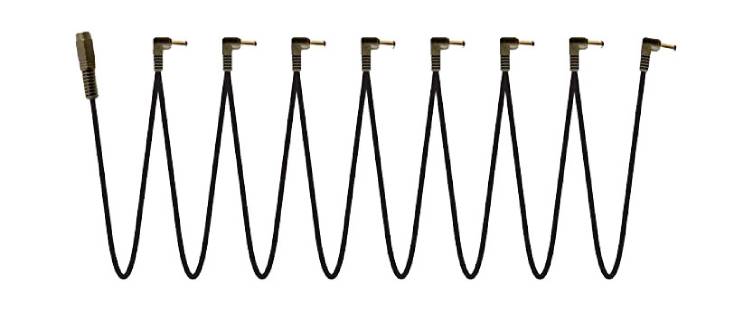
When choosing a daisy chain power supply, my advice is to amp up the current requirements for every pedal you have (Google them if they don’t say it on the chassis), add some to the figure (for future pedals) and then make sure the daisy chain can at least handle that current. If the supply offers more current, that’s absolutely fine (the pedals just won’t use it) but if it doesn’t at least meet the minimum demands, your pedals won’t work.

Also, most daisy chain supplies will handle 9v pedals perfectly, but not all of them will be okay with 12v or 18v pedals, so do check!
Isolated/regulated Power Supply
This last style of power supply is perhaps the most professional. An isolated, or regulated (they go by both names) power supply uses individual connections for each pedal, so that the power is delivered to each pedal via its own cable. You'll find lots of these on our site, including quality units by MXR, T-Rex, Voodoo Lab, Engl, Strymon, Mission and many more!
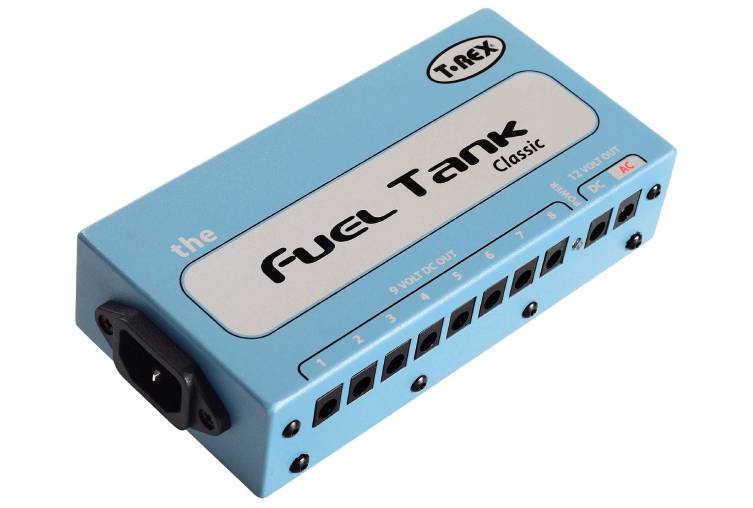
Why is this useful? Well, there are a bunch of reasons. Firstly, the pedals are not so much sharing one current as much as they are getting their own correct amount of current, so the actual flow of electricity is more reliable. This is what is meant by a regulated supply.
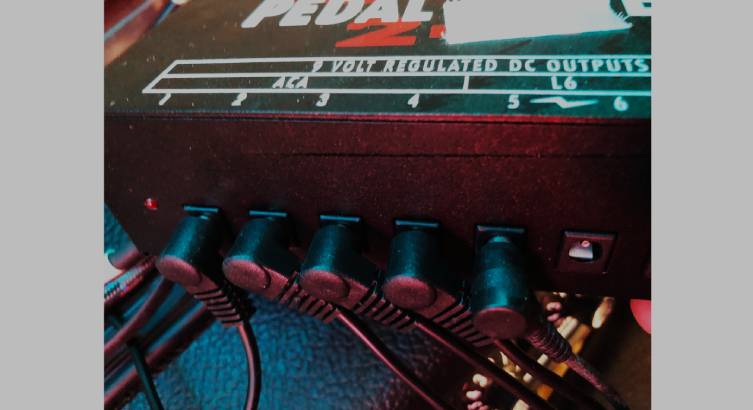
Also, if one pedal has a problem for whatever reason, it is isolated from the rest (since they are all isolated) and therefore the rest of your signal will be fine. You’ll lose control of the problem pedal only, instead of your entire signal dying.
Lastly, isolated power supplies are usually able to offer at least one or two outlets for different voltages, so you can have 12v or 18v pedals included happily alongside the regular 9v pedals.
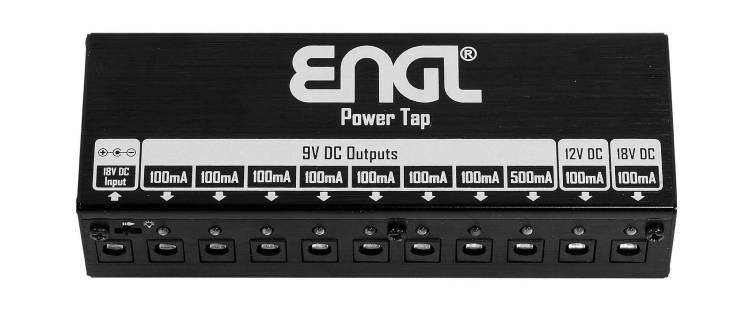
Choose What’s Right for You
As you’ve read, there are a few ways to answer the question of which power supply to go for. My advice is to look forwards and have some contingency plans in place for the pedals you’ll inevitably buy in the future. We all think we’ve built the perfect pedalboard until some shiny new pedal comes along and changes our ideas! No pedal fan is immune to this, so I say accept this as a fact and purchase something that’s more powerful than you currently need.
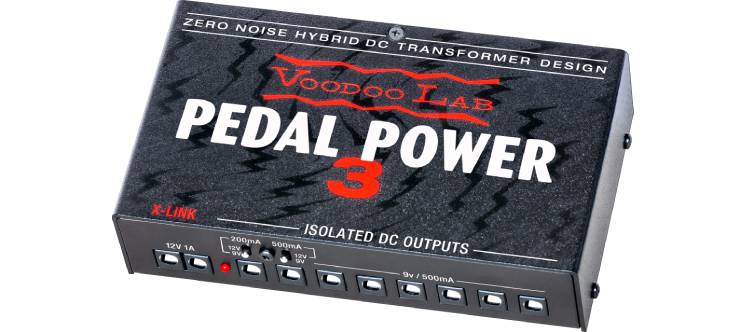
If you can afford a regulated power supply, these are easily the best choices, for quality, performance and reliability.
The daisy chain style, such as the Trutone 1 Spot, is a very economical solution and worth trying if you’re on a budget. I’d also say that these are handy things to own and keep in a gig bag or case, because they inevitably come in handy sooner or later.
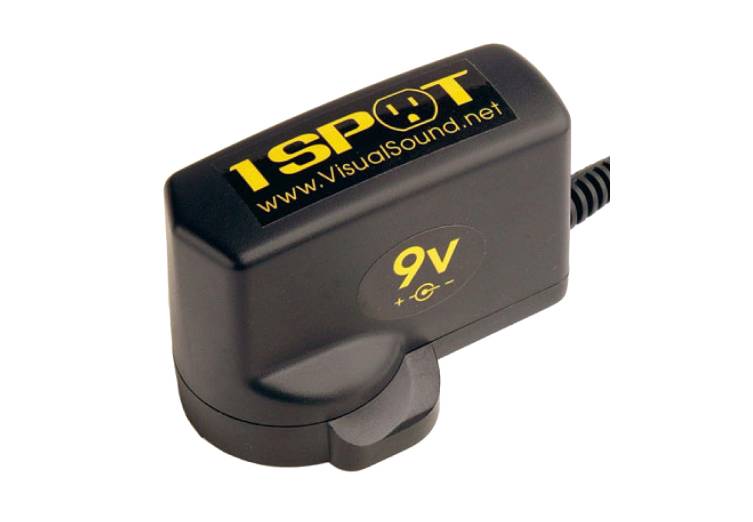
Buying a power supply is maybe not as exciting as choosing a crazy new octave fuzz pedal, but it’s the sort of purchase that probably matters a lot more at the end of the day. Choose wisely!
Browse our Pedal Power Supplies



